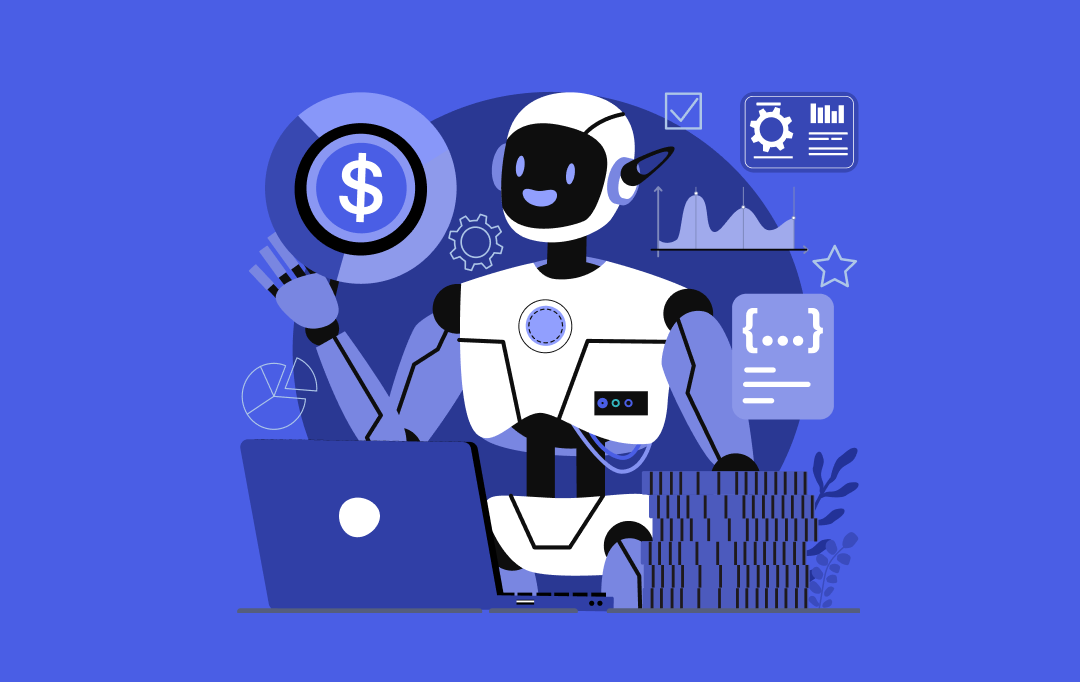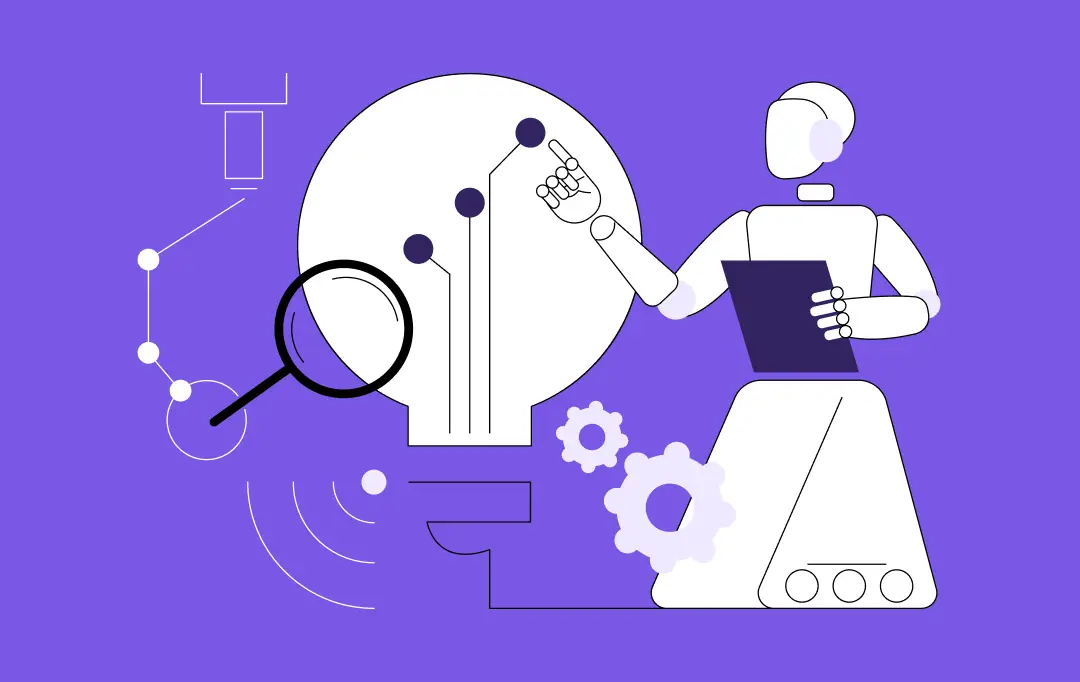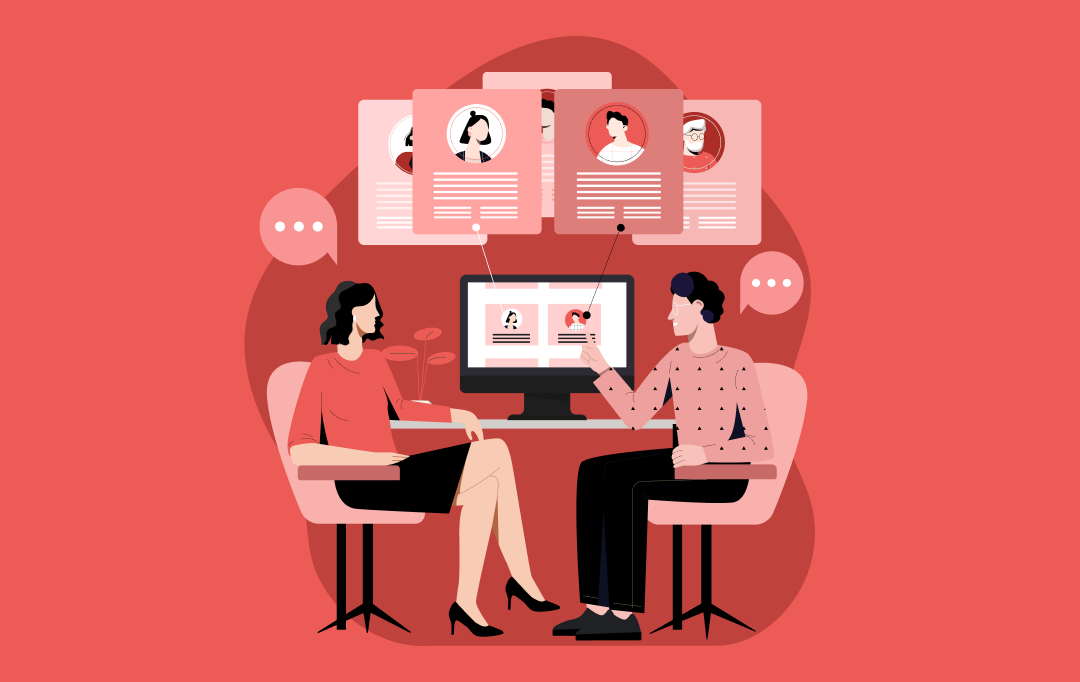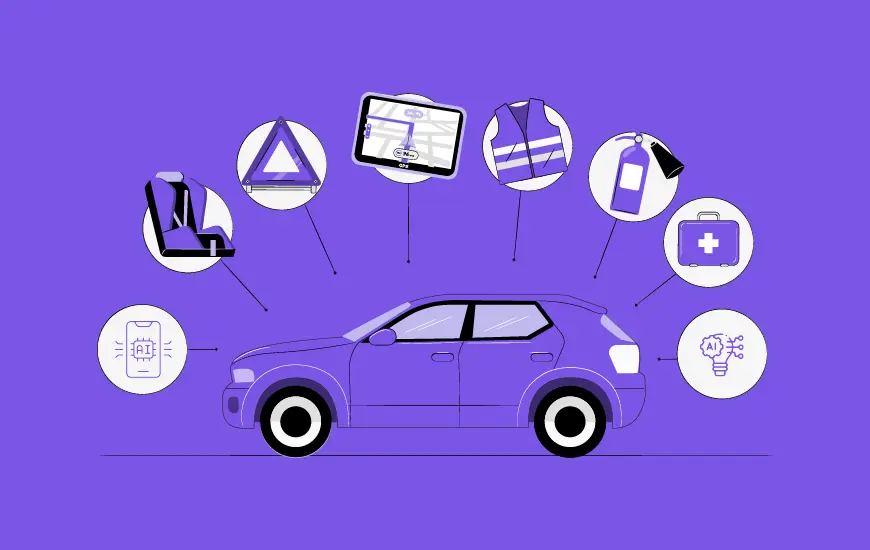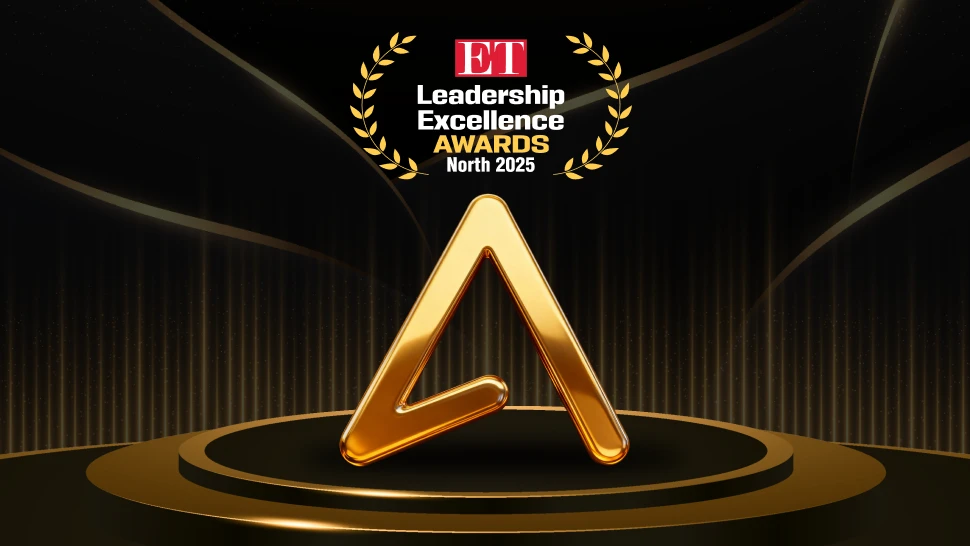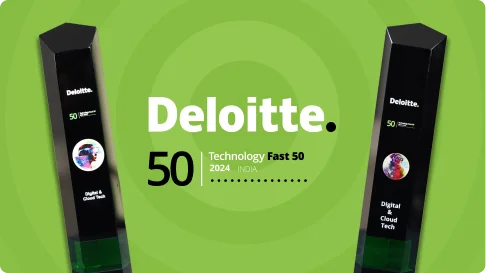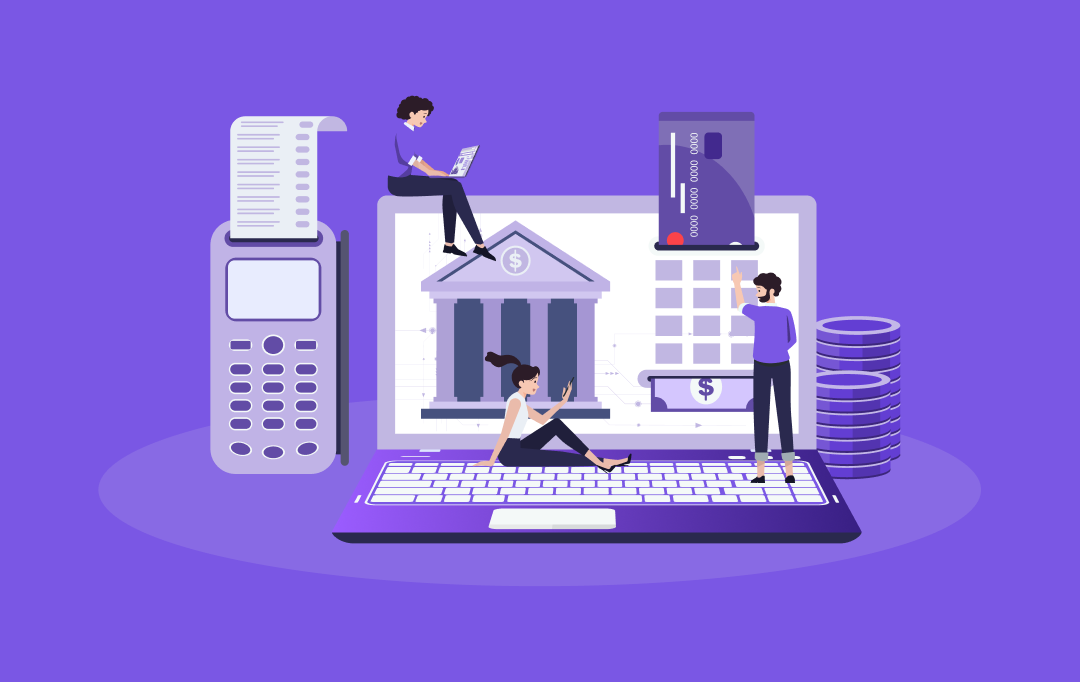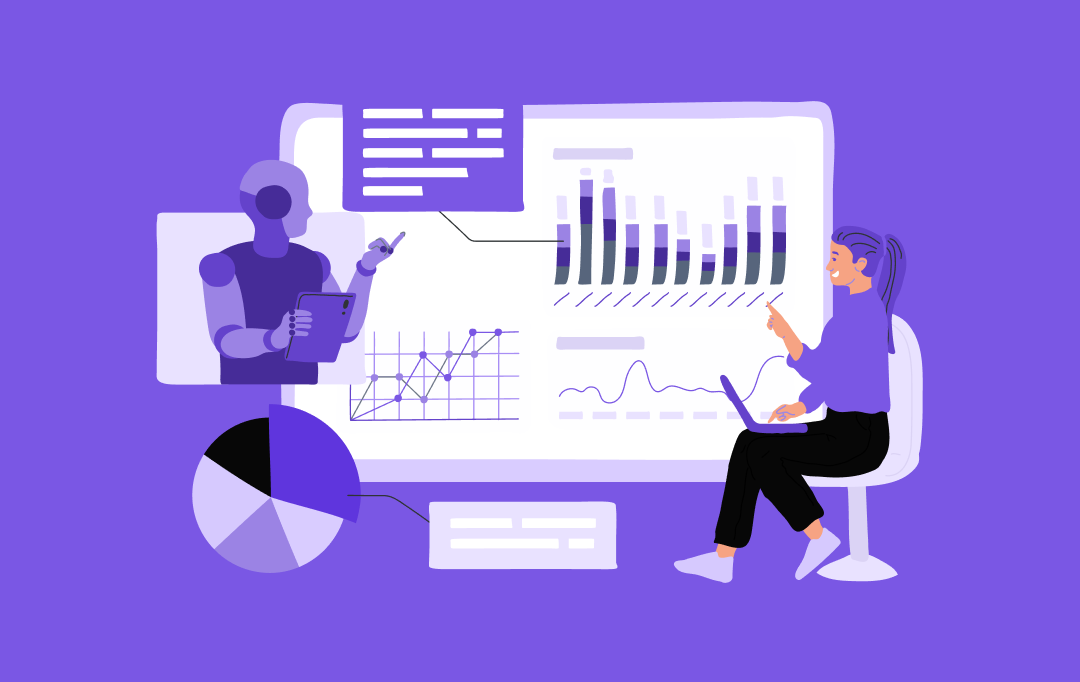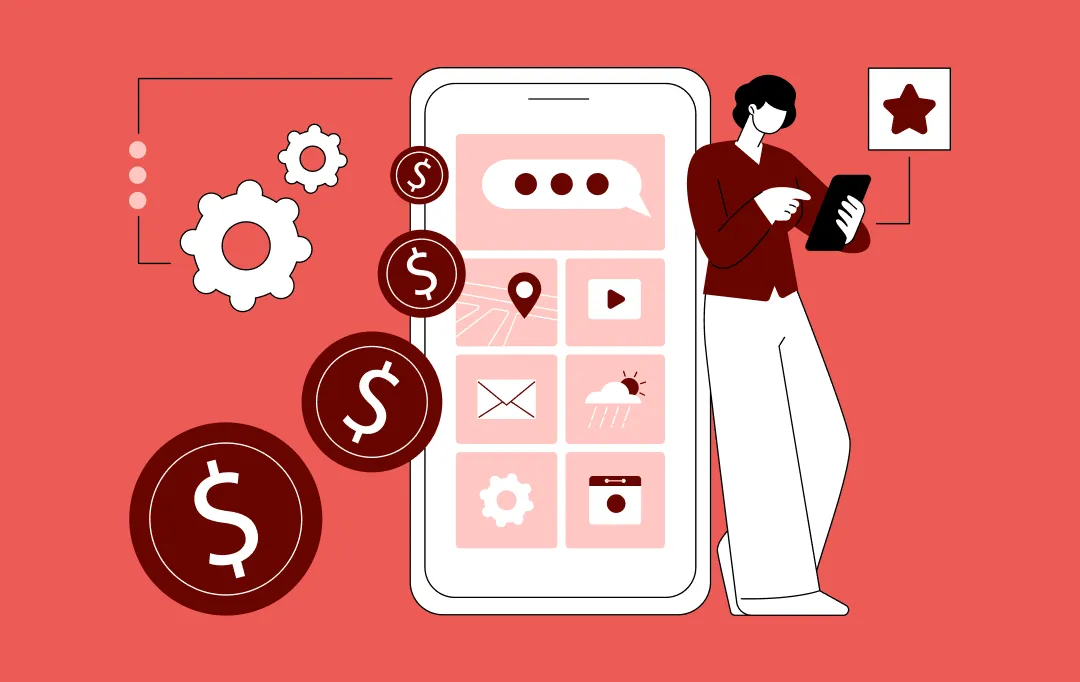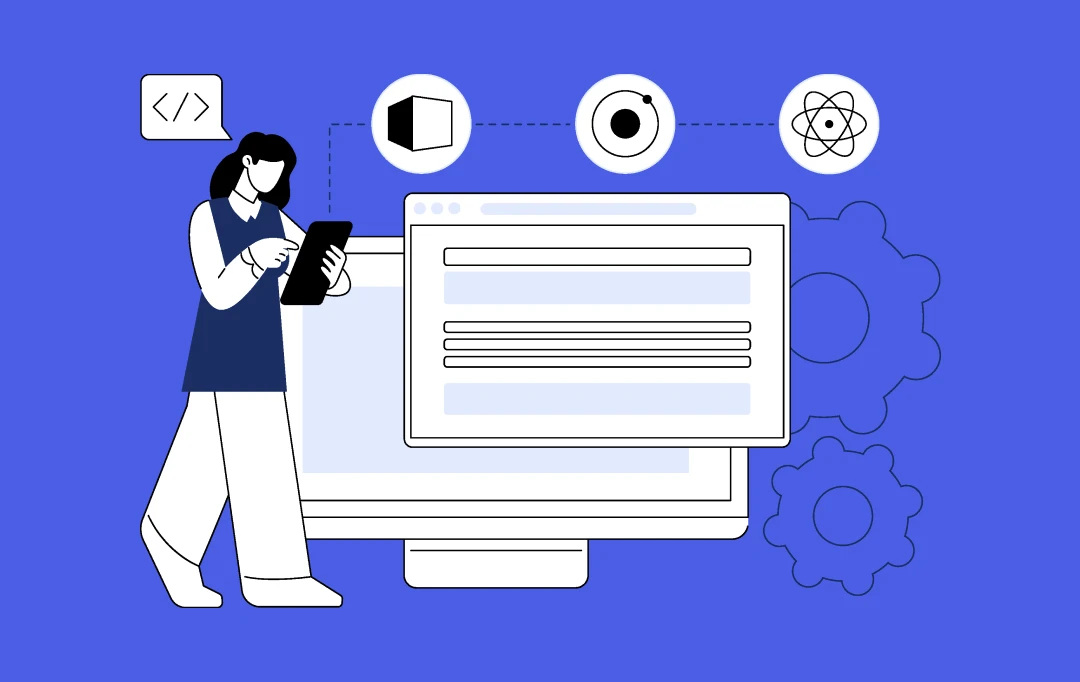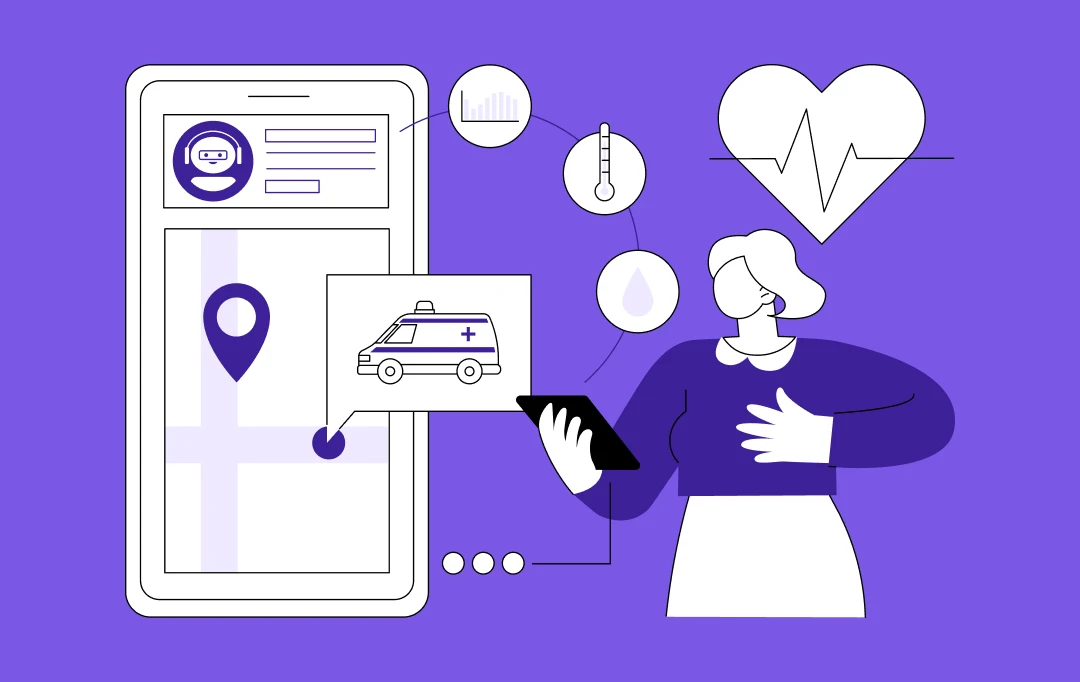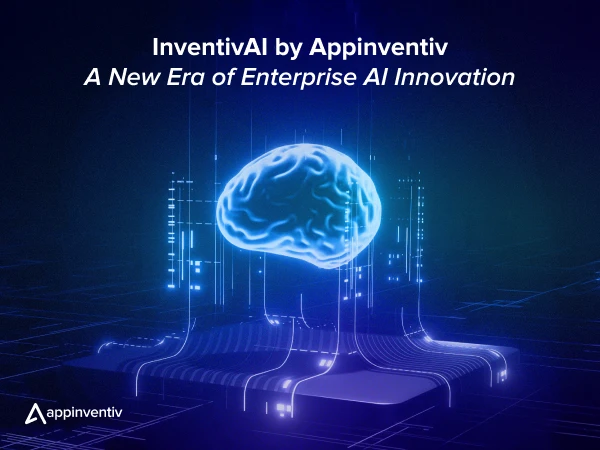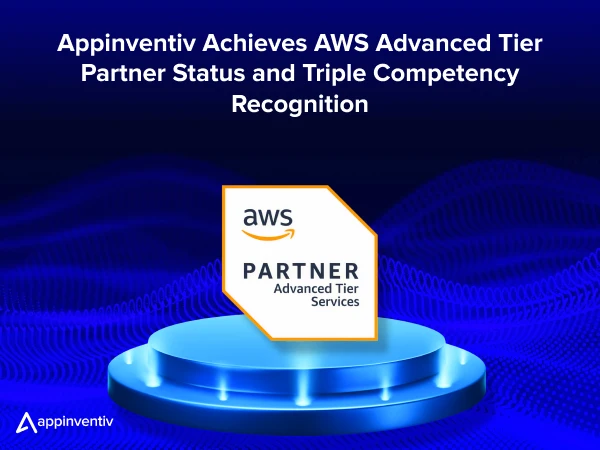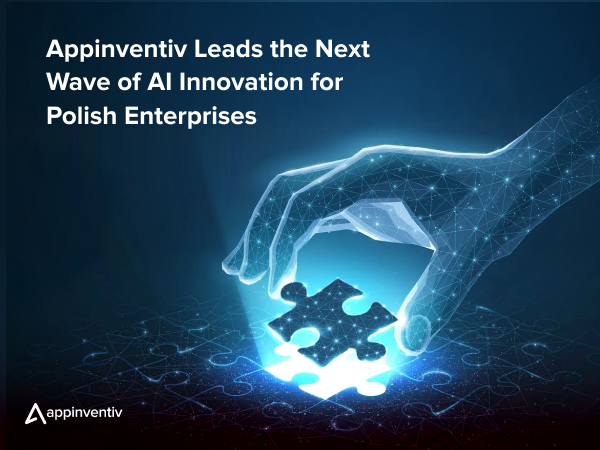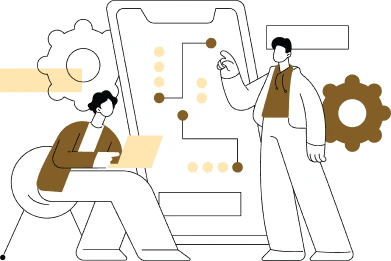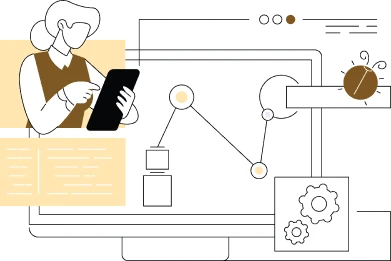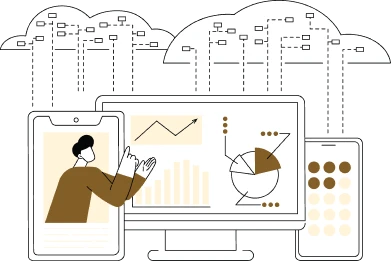- Cost Breakdown of IoT App Development
- Cost Estimates (Based on App Complexity)
- Cost Estimation (Based on Development Phase)
- Planning & Research (Discovery Phase)
- Core IoT App Development Cost Components: The Foundational Layers of an IoT Solution
- Software Development
- Cloud Services & Infrastructure
- Connectivity
- Types of IoT Apps and Their Costs
- Factors Influencing IoT App Development Cost
- UI/UX Design
- Development Team: Expertise, Size, and Geographic Location
- Technology Stack Choices
- Regulatory and Certification Requirements
- Challenges in Budgeting IoT Development
- Complexity and Interdependencies
- Hidden and Unforeseen IoT app development cost
- Evolving Requirements and Scalability
- How to Overcome Obstacles when Budgeting IoT Development?
- Mitigating Complexity and Interdependencies
- Identify and Address the Hidden Cost of IoT Development
- Managing Evolving Requirements and Scalability
- Strategies for IoT App Development Cost Optimization
- Why Partner with Appinventiv as Your IoT Application Development Services Company?
- Trusted Long-Term Partnership
- Proven Delivery at Scale
- IoT Excellence
- Award-Winning Excellence
- FAQs
Key takeaways:
- Cost Variability: IoT app development costs range from $45,000 for simple apps to $500,000+ for complex enterprise platforms.
- Development Phases: Planning, design, development, testing, and maintenance each contribute significantly to the total budget.
- Core Components: Software, cloud services, and connectivity form the foundational layers, with software often 40–50% of costs.
- Hidden Costs: Downtime, data breaches, and scope creep can inflate budgets if not proactively managed.
- Cost Optimization: Use MVPs, open-source tools, and strategic outsourcing to reduce expenses while ensuring scalability.
Industry was turned on its head by the global Internet of Things (IoT), which it unleashed on your business (IoT). As physical units become more closely linked, they can provide unprecedented amounts of data and automation. With this transformative technology, companies are striving to create a more comfortable user experience than ever, while their competitors fall increasingly behind.
Nevertheless, setting out on the journey to develop an IoT program can involve many layers and costs. Applications of IoT apps make connectivity easy and quick. Still, on the other hand, they are a complex system comprising elements such as hardware design, embedded programming, cloud functions, and various network protocols, resulting in a unique and often very tight expenditure pattern.
The IoT app development cost can vary significantly. It can be a basic one that costs $45,000 or a super complex and enterprise-class platform of $500,000 and up, and more.
As such, this guide is designed to provide a comprehensive overview of the investment required, including the components and costs, from initial purchase to long-term care and maintenance of the pond, so that you can make an informed decision about the amount you wish to invest.
IoT Development Market Overview
Value of the global Internet of Things (IoT) market in 2023: $595.73 billion. The market is projected to reach $4,062.34 billion by 2032, expanding at a 24.3% CAGR over the forecast period. North America held a 32.81% market share in 2023. (Source: Fortune Business Insights)
The IoT market is projected to reach over $4 trillion by 2032. Unlock your share of this massive growth.
Cost Breakdown of IoT App Development
Breaking down the monetary terrain of IoT app development comes down to a series of costs that shift according to their purpose (whether upfront, throughout stages of development, during deployment, or for continued upkeep), complexity, and other factors.
Cost Estimates (Based on App Complexity)
The feature set of an IoT solution: Scale and complexity. These are some of the key factors that influence overall IoT app development cost. In other words, the more features, connected devices, and platforms the app needs to support, the more expensive it will be.
| Project Scope | Estimated Cost Range | Key Characteristics |
|---|---|---|
| Simple IoT Application | $45,000 – $100,000 | Limited number of connected devices, basic UI, simple data collection, basic control panel, and data logging. |
| Mid-Range Solution | $100,000 – $300,000 | Real-time data, cloud storage, standard mobile app integration, moderate features, linking 10-50 intelligent devices. |
| Advanced/Enterprise Platform | $300,000 – $500,000 | Custom dashboards, AI/ML features, multi-device synchronization, high-volume data processing, tailored industrial IoT solutions. |
Cost Estimation (Based on Development Phase)
The development of an IoT application consists of several stages, and the final cost of the app will depend on the completion of these stages. The more you know about these processes and what they involve, the more you’ll be able to maintain control of your project and your budget.
Planning & Research (Discovery Phase)
And this is just the initial step, which is perhaps one of the most critical in terms of the project’s financial health. This includes specifically defining the app’s behavior, creating an experience map, and researching various IoT technologies, as well as understanding the users and their needs.
| Item | Cost Range |
|---|---|
| Planning & Research (General) | $6,250 – $18,750 |
| Dedicated Discovery Phase | $8,000 – $15,000 |
Design (UI/UX)
The design process is about creating the visual and interactive features of the IoT app. This includes wireframing, designing an intuitive User Interface (UI) and User Experience (UX), and creating an interactive prototype for the application. UI/UX design price can address the needs and priorities that are quite different from each other.
| Design Type | Cost Range |
|---|---|
| Professional Design Work (General) | $12,500 – $37,500 |
| Basic Designs (Minimalistic, Pre-built Templates) | $5,000 – $15,000 |
| Advanced Designs (Custom, Highly Interactive UI) | $15,000 – $50,000 |
| Responsive Design | $10,000 – $30,000 |
Bonus Read: An Ultimate Guide to Visual Storytelling for App UI/UX Design
Development & Integration
This stage is the heart of the app-building process and is typically the most expensive phase of the entire development process. This includes the coding itself, constructing the software, authorising the different pieces, and making smooth interactions with the users. This crucial phase can be very pricy, depending on the complexity of the app.
| Item | Cost Range |
|---|---|
| Basic Application Development | $37,500 – $125,000+ |
| Enterprise/Custom Application Development | $187,500+ |
| Overall IoT App Development (Basic) | $15,000 – $50,000 |
| Overall IoT App Development (Advanced) | $200,000+ |
| Simple Device Integration | $5,000 – $20,000 |
| Complex Ecosystem Integration | $50,000 – $200,000 |
Testing & Quality Assurance (QA)
Comprehensive testing is a critical step to verify that the IoT application is safe, fully operational, and well-suited for rollout. This stage involves rigorous mobile app QA (quality assurance) to identify and resolve any bugs, security vulnerabilities, or performance issues before launch.
| Item | Cost Range |
|---|---|
| Professional QA Testing Services | $12,500 – $37,500 |
| Specific QA Efforts (40-60 hours) | $2,400 – $3,600 |
| Android Testing (additional) | Up to 25% of the development budget |
Maintenance Phase (Ongoing)
After your IoT application goes live, you should provide maintenance and support as needed, including regular updates and user support. App maintenance cost includes fixing bugs, installing critical security updates, making sure the program works with the new operating system updates, and adding some features to keep the product current (and competitive).
| Item | Cost Range |
|---|---|
| Annual Maintenance (General) | 10-30% of the initial custom IoT development cost |
| First Year Maintenance | Up to 50% of the total development cost |
| Subsequent Years Maintenance | 15-25% of the total IoT development cost |
| Average Monthly Maintenance | $2,000 – $2,500 |
| Annual Hosting Fees | $6,250 – $62,500 |
| Monthly Server Costs | $70 – $320 |
| Annual Additional Hardware | $6,250 – $625,000 |
| Annual Data Services | $1,250 – $62,500 |
| Minor Bug Fixes | ~$50 |
| Significant Functional Updates | $1,000 – $2,000 |
| Regular Updates (Annual) | 20-30% of initial deployment costs |
Core IoT App Development Cost Components: The Foundational Layers of an IoT Solution
Developing an IoT application necessitates investment across several fundamental layers, each contributing significantly to the overall budget. These layers include software, cloud services, and connectivity.
Software Development
Software development forms the intelligent core of any IoT solution, enabling devices to communicate, process data, and interact with users. This category typically represents the largest portion of the total project budget, often accounting for 40-50% of the overall costs. Overall, software development efforts generally begin at $50,000.
| Item | Cost Range |
|---|---|
| Overall Software Development (Starting) | $50,000+ |
| Embedded Firmware Development | $10,000 – $30,000 |
| Firmware Engineer Salary (Annual, US) | $90,000 – $145,000 |
| Basic IoT App Features | $10,000 – $50,000 |
| Advanced IoT App Features | $50,000 – $150,000 |
| Data Storage Setup (Cloud) | $1,920 – $2,400 |
| Data Processing & Structuring | $2,880 – $3,840 |
| Custom Driver Development | $10,000 – 1M+ |
| Data Protocol Research (15-25 hours) | $900 – $1,500 |
| Reverse Engineering Protocols (40-60 hours) | $2,400 – $3,600 |
Cloud Services & Infrastructure
The cloud serves as the central hub for IoT data, where information is stored, processed, and analyzed. While the broader software development budget, starting at $50,000+, encompasses cloud services and IoT data analytics, the ongoing operational costs for cloud infrastructure are distinct and significant.
| Provider | Base Cost/Pricing Model | Example Cost |
|---|---|---|
| AWS IoT Core | $0.042/device/year | $183.60 (for 400,000 messages) |
| Azure IoT Hub | $10/unit/month (Basic); $25/unit/month (Standard S1) | $250.00 (for 400,000 messages) |
| Google IoT Core | Volume-based pricing | $1,382.40 (for 400,000 messages) |
| HiveMQ Cloud | Connection-based | $203.68 (for 400,000 messages) |
Connectivity
IoT Connectivity technologies serve as the indispensable backbone of any IoT solution, enabling devices to communicate seamlessly with the cloud and with each other. Network fees and data transfer are ongoing, recurring expenses that must be factored into the long-term budget.
| Connection Type | Annual Cost per Device | Key Characteristics/Data Allowance |
|---|---|---|
| LoRaWAN | $4 – $6 | Low bandwidth, ideal for remote locations. |
| Narrowband IoT | $6 – $12 | Basic connectivity, suitable for broader coverage. |
| Cellular | Starting at $12+ (plus data at ~$0.04/MB) | Higher bandwidth, suitable for more data-intensive applications. |
Scope smart, stack savvy, and stay compliant. Tap into our bespoke IoT development services to build faster and save big!
Types of IoT Apps and Their Costs
The cost of developing an IoT application can vary significantly based on its specific type and the industry it serves, as different applications demand varying levels of complexity, features, and regulatory compliance.
| App Type | Estimated Cost Range | ||
|---|---|---|---|
| Basic Level | Mid-Level | Complex Level | |
| Smart Home IoT Apps | $35,000 – $50,000 | $80,000 – $100,000 | $200,000 – $400,000 |
| Industrial IoT (IIoT) Apps | $20,000 – $50,000 | $60,000 – $100,000 | $200,000 – $500,000 |
| Healthcare IoT Apps (IoMT) | $45,000 – $200,000 | $300,000 – $500,000+ | $600,000 – $800,000 |
| Automotive IoT Apps | $40,000 – $100,000 | $200,000 – $300,000 | $400,000 – $600,000 |
| Smart City IoT Apps | $30 Million – $40 Billion (Large-scale projects) | $130 Billion (Global spending in 2023) | $200 Billion (Projected global spending by 2025) |
Factors Influencing IoT App Development Cost
The total cost of developing an IoT application is not a fixed sum but rather a dynamic figure influenced by several interconnected factors. Understanding these drivers is essential for accurate budgeting and strategic decision-making.
UI/UX Design
The level of sophistication in the User Interface (UI) and User Experience (UX) design directly correlates with IoT development costs. A custom, highly interactive UI/UX design requires more resources and consequently increases the overall expense.
| Design Type | How it Impacts Cost | Impacted Cost ($) |
|---|---|---|
| Basic Designs (Minimalistic, Pre-built Templates) | More economical due to simplicity and reuse | $5,000 – $15,000 |
| Advanced Designs (Custom, Highly Interactive UI) | Requires more resources for intricate visuals and interactions | $15,000 – $50,000 |
| Responsive Design | Adds complexity to ensure seamless adaptation across devices | $10,000 – $30,000 |
Development Team: Expertise, Size, and Geographic Location
The composition of the development team, including their experience level, size, and geographic location, significantly influences the overall cost of IoT development. Highly experienced IoT developers and engineers, particularly those in regions with higher labor costs, command higher hourly rates.
| Factor | How it Impacts Cost | Impacted Cost ($) |
|---|---|---|
| Junior Developer Hourly Rate | Lower cost for less experienced talent | $12 – $90/hr (depending on region) |
| Mid-Level Developer Hourly Rate | Moderate cost for experienced talent | $30 – $130/hr (depending on region) |
| Senior Developer Hourly Rate | Higher cost for highly experienced talent | $60 – $200+/hr (depending on region) |
| Firmware Engineer Salary (Annual, US) | Specialized expertise commands premium salaries | $90,000 – $145,000 |
| Small Team (3-5 members) | Lower overall labor costs for smaller projects | ~$250,000 |
| Large Team (10+ members) | Higher overall labor costs for complex/accelerated projects | $625,000+ |
| Strategic Outsourcing (e.g., Eastern Europe, Asia) | Lower hourly rates can reduce overall development costs | Significantly lower than North America/Western Europe |
Technology Stack Choices
Selecting an efficient and appropriate technology stack is a critical decision that can significantly impact the Internet of Things app development cost and reduce long-term maintenance issues. Leveraging existing libraries and well-established frameworks can substantially reduce coding time and overall development expenditures.
Choosing a scalable tech stack and well-supported platforms from the outset minimizes integration issues and helps control long-term maintenance costs.
| Technology Choice | How it Impacts Cost | Impacted Cost ($) |
|---|---|---|
| Cross-platform Development (e.g., React Native) | Reduces development time and cost through code reuse across platforms | Saves 30-40% of time and money |
| Using Pre-built Libraries/SDKs (e.g., AWS IoT SDK) | Speeds up backend operations and reduces custom coding efforts | Reduces costs by 15-20% |
| Native Development for Each OS | Requires separate development teams and higher maintenance for each platform | +50-100% IoT development cost |
| Cross-platform Development (e.g., React) | Single codebase reduces complexity and overhead | Saves $25,000-$70,000 |
Regulatory and Certification Requirements
For IoT applications, particularly those operating in specific industries or handling sensitive data, adherence to regulatory and certification requirements is non-negotiable and introduces mandatory costs.
Industry-specific standards (e.g., GDPR for data privacy, HIPAA-HITECH for healthcare, IEC 62443 for industrial IoT) impose significant expenses for compliance, necessary audits, and official certifications. These costs are not uniform but depend heavily on the industry sector, the volume and type of data handled, and the organization’s existing security posture.
| Regulation/Certification | How it Impacts Cost | Impacted Cost ($) |
|---|---|---|
| GDPR Compliance (Annual) | Involves legal fees, technology, training, auditing, and cybersecurity investments. Non-compliance leads to severe fines. | Thousands to several million Euros ($1,080 – $1,080,000+) |
| GDPR Certification | Cost for official certification varies by organization size and complexity. | $5,400 – $108,000 |
| HIPAA Compliance (Mid-range estimate) | Mandatory for healthcare IoT, including legal, technology, and training. Non-compliance leads to severe penalties. | $80,000 – $120,000 |
| IEC 62443 Training | Required for industrial IoT cybersecurity expertise. | $695 – $1,800 |
| IEC 62443 Annual Registration (Component) | Annual fee for component certification. | $1,200 |
| IoT Security Assessment (Simple Device) | Cost for testing against limited security requirements. | $8,000 – $10,000 |
| IoT Security Assessment (Complex Ecosystem) | Cost for comprehensive testing of connected devices and software. | Up to $95,000 |
Challenges in Budgeting IoT Development
Several complexities are involved in planning for IoT application development that extend beyond typical software projects. The interdependencies of hardware, software, cloud, and networking elements, combined with the changing landscape of technologies and regulations, makes accurate forecasting of costs a true mystery.
Complexity and Interdependencies
IoT implementations are complex and involve a large number of moving parts that need to be integrated smoothly. This complexity contributes to the challenge of forecasting all costs up front. Once an application’s in the field, the total of all these parts—from embedded software to cloud services and various network protocols—if you make a change in one area, all of a sudden, that can have these sorts of ripple effects that determine the cost of IoT implementation.
Hidden and Unforeseen IoT app development cost
Aside from the flat-out build and run challenges, IoT is open to a range of hidden costs that, if not effectively controlled, can make the difference between black and red. These are generally due to uncontrolled risks and may be:
| Hidden Cost Factor | Description | Potential Financial Impact |
|---|---|---|
| Downtime | System failures or outages in connected IoT deployments. | $100,000 – $300,000 per hour (general) |
| Data Breaches | Security incidents leading to unauthorized access or data loss. | Direct financial losses, reputational damage, operational disruptions, and substantial regulatory fines |
| Scope Creep | Uncontrolled expansion of project requirements beyond initial definitions. | Dramatically increases costs and alters ROI calculations |
| Vendor Lock-in | Over-reliance on a single vendor’s proprietary solutions. | Higher costs when switching providers or integrating new technologies |
| Opportunity Costs | Missed revenue or market share due to project delays. | Tangible financial loss not explicitly budgeted |
| Training Costs | Ongoing training for staff to manage new IoT tools and systems. | $1,000 – $3,000 per employee |
| Obsolescence | IoT devices are becoming outdated within a few years, requiring upgrades or replacements. | Recurring expense contributing to the total cost of ownership. |
Evolving Requirements and Scalability
IoT applications are typically developed to grow rapidly and evolve quickly. However, scaling an IoT solution without giving significant thought to the upfront requirements can introduce exponential and unexpected costs in terms of data management, storage, API calls, and other related expenses.
It’s exponentially more expensive to retrofit an unscalable architecture for additional devices, users, or data streams than it is to build for modularity and scalability from the outset. The cost never ends, because when new platforms have to be supported or new IoT devices integrated as the ecosystem matures, that’s extra, too.
How to Overcome Obstacles when Budgeting IoT Development?
How to plan your IoT budget: Working through the challenges to make the right budgeting decisions. They take certain steps to help businesses better manage their costs and avoid risks.
Mitigating Complexity and Interdependencies
A well-structured approach is indispensable for dealing with the complexity of IoT solutions:
- End-to-End Requirements Engineering: Clearly articulate all project requirements, including Takeoffs, Analysis and Reporting Requirements, system integration, and end-user services. This early investment enables ideas to be validated and bottlenecks to be identified, preventing expensive rework.
- Modular and Microservices: Architect the IoT solution to leverage the modular approach and microservice architecture, dividing it into small, loosely coupled services that can be independently deployed. This improves the manageability and provides a better fit and scaling.
- Build vs. Buy – Strategize: Be very particular and judicious in the choices about what to build oneself (from scratch) and what to purchase off-the-shelf equivalent. Utilizing available libraries, open-source frameworks, and SDKs can also save a significant amount of time and resources during the development process.
- Collaborate with Seasoned Developers: Consult IoT-experienced software development experts. Industry-savvy consulting. Through the insight of experts, we can help make crucial decisions with components, functions, and practices to plan and prioritize the budget, and cut costs.
Identify and Address the Hidden Cost of IoT Development
Proactive risk management is paramount if hidden costs are not to sink an IoT project:
- Risk and Contingency Planning: Create a full-scope WBS and include risk and contingencies/mitigation for both technical risk (e.g., in case critical tech doesn’t work) and programmatic risks such as delay due to weather or scope changes. This anticipation reduces the effect of unknowns.
- Security Investment Plan in Advance: Incorporate security from the very beginning to build a multi-faceted, solid security foundation. This includes Encryption, secure access control, repeatable vulnerability assessments and penetration tests, and a secure firmware update method (FOTA). It’s much more cost-effective to be proactive about security rather than engaging in damage control after a hack. It is also possible to reduce operational costs by automating the FOTA processes.
- Predictive Service: Leverage sensors to track equipment’s well-being and determine when to service it before it breaks – halting potentially exorbitant downtime. Remote monitoring, improved database query performance, and scheduling software updates to happen at off-peak times are examples of how IoT app maintenance cost can also be minimized.
Managing Evolving Requirements and Scalability
Designing for future growth from the outset is crucial for cost-effective scalability:
- Design for Scalability: Launch a modular, microservices architecture from day one to rapidly support the growth of devices, users, and data streams. This avoids expensive re-architecture later.
- Phased Rollout (MVP Method): Begin with a Minimum Viable Product (MVP) to test key ideas and collect user feedback with minimal time/ money commitment. This enables iterative development and focused resource allocation for subsequent feature rollouts, as dictated by market demand.
- Resource Optimization: Optimize device setup and performance, enhance data analytics for improved data utilization, and enable smart edge computing to reduce data transfer costs, as data processing occurs at the source itself.
Addressing the inherent complexities and potential pitfalls in IoT budgeting requires a strategic and proactive approach. By implementing specific measures, businesses can gain better control over costs and mitigate risks.
Strategies for IoT App Development Cost Optimization
IoT app development can be costly, but with a few strategies, companies can minimize the cost and still end up with a well-crafted app that will be justified in the long run.
| Strategy | How it Impacts Cost | Impacted Cost ($) |
|---|---|---|
| Building From an MVP | Limit the upfront investment, iterate quickly, and learn from the market. | Lowers initial investment; initial costs for basic app range from $10,000 to $50,000 |
| Using Open Source / Libraries | It has significantly reduced coding and overall development costs by incorporating pre-developed solutions for use in any stock and admin system. | Pricing is 15 – 20 % less than from the ground up. |
| Strategic Outsourcing | Provides opportunities for cost savings because some areas have lower hourly rates. | Huge potential savings in cost (because of much cheaper hourly rates (e.g. $12-$120 or more/hr in places as diverse as Asia and Eastern Europe vs $50-$200+/hr in North America and Western Europe) |
| Resourceful Management And Agile Development | The Agile method in app development enables teams to react quickly to changing stakeholder needs, prevents rework, and delivers value faster. | Avoids costly rework and minimizes operational disruptions, potentially saving $100,000 – $5,000,000+ per hour in downtime costs |
Build a cost-effective IoT app with a lean MVP, open-source tools, strategic outsourcing, and agile practices.
Why Partner with Appinventiv as Your IoT Application Development Services Company?
Now that you have reviewed everything, the final step is to get started with your own IoT solution. At Appinventiv, our IoT app developers understand the business aspect of the connectivity ecosystem. To maintain a high level of scalability, speed, and security, we offer the following IoT application development services:
- IoT consultancy
- IoT app development
- IoT wearable connectivity development
- IoT testing
- IoT maintenance
- Legacy Modernization System
Backed by a decade of extensive experience, we have over 1,600 professionals and more than 3,000 projects across various verticals, including software, embedded, Mobile, IoT, Hybrid apps, and a range of other systems. Their dedication to ensuring measurable ROI is reflected in our 95% client retention rate and 60% efficiency savings promise!
Trusted Long-Term Partnership
Our relationships with AWS, Azure, and Google Cloud Platform ensure that you have a partnership that can be leveraged to scale and future-proof your business as needed. We remain compliance-first, with standards that are unparalleled globally, encompassing GDPR, ISO 27001, and MQTT technology protocols. This design is safe and interoperable for Mission Critical IoT structures.
Proven Delivery at Scale
We’re proven — we’ve raised over $900 million for startups and Fortune 500 companies to build our digital solutions. Utilizing our positions as edge leaders, cloud integrators, and analytics leaders, we can de-risk what are often extremely complex projects – from retrofitting legacy systems to enabling city-wide IoT deployments.
IoT Excellence
We specialize in shaping IoT solutions that transform ideas into connected and seamless experiences. It’s our experience building IoT solutions that enable businesses to accelerate their time to market, engage users, and differentiate themselves with smart, secure, and scalable applications.
ActiDrive: IoT-Powered Driver Assistant App
ActiDrive, created by us, is an OBD-II dongle cloud IoT app that uses optical recognition and gesture technology. It enables drivers to interact with their infotainment and communication apps (e.g., SMS, WhatsApp, music, maps) without taking their eyes off the road, using a gesture-recognizing system that grants them full access to all IVI features.
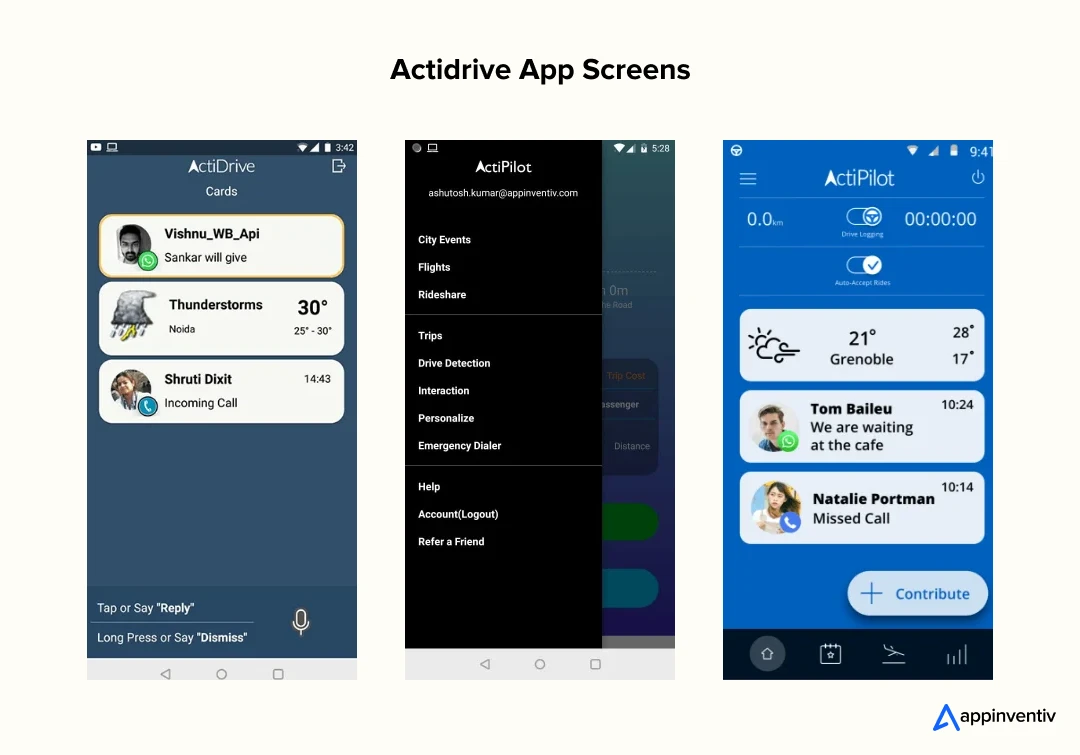
Results:
- An intuitive gesture interface reduces drivers’ distractions and increases driving safety.
- Live trip tracking and location history provide you with knowledge for optimal efficiency and tax deduction.
- An award-winning breakthrough in automotive safety utilizing the Internet of Things (IoT).
ILITY – AI-driven and IoT-based SaaS solution for the Real Estate Industry
We built ILITY, a white-labeled SaaS platform for commercial property management that leverages IoT, AI, and cloud technology to provide real-time analytics, digital access (including HID, Openpath, and more), and streamlined payments. This simplifies both leases through DocuSign and tenant communication with Tidio/Sendbird.
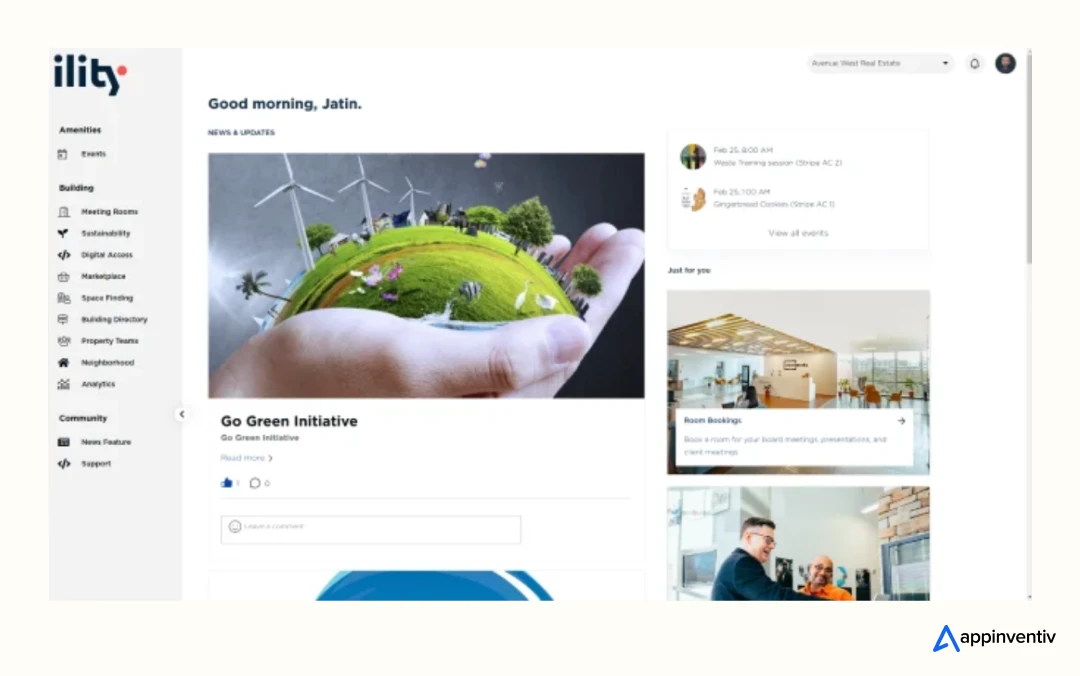
Results:
- A 40% pressure on occupancy rates and a 20% spike in landlord ROI.
- Increased efficiency of personnel and customer experience.
Award-Winning Excellence
Our continuous dedication to seamless IoT development has earned us international accolades and the highest honors in the awards space. These are clear recognitions of our continued commitment to delivering the best possible work to our clients.
- Spring 2025 Global Clutch Awards
- Top 100 Fastest-Growing Companies list for 2025
- Top Custom Software Development Firm 2025
- Fastest Growing AI Development Companies of 2024
- Deloitte Fast 50 India 2023 Award
Get ahead and step into the world of IoT with our IoT application development team, and stay connected with us to the complete digital world.
FAQs
Q. How much does it cost to develop an IoT app?
A. The cost to develop an IoT app varies significantly depending on its complexity, features, and IoT integration cost. A simple IoT app with basic monitoring can range from $45,000 – $100,000. More complex solutions, including those with real-time analytics, AI/ML integrations, and multiple device management, can cost anywhere from $300,000 to $500,000 or even more.
Q. How long does it take to develop an IoT app?
A. The development time for an IoT app is not fixed and depends heavily on the project’s scope and complexity.
- A basic IoT application typically takes 1-3 months to develop.
- A mid-range solution with more features could require 3-6 months,
- complex and advanced platforms can take 6-12 months or even longer.
Q. Is there a difference in cost between native and cross-platform IoT apps?
A. Yes, there is a significant difference in cost. Native IoT app development (building separate apps for iOS and Android) generally incurs higher upfront costs, often 30-40% more. This is because it requires separate codebases, platform-specific expertise, and parallel maintenance efforts. Costs can range from $100,000 to $250,000+.
In contrast, cross-platform IoT app development (using a single codebase for multiple platforms) is typically more cost-effective, potentially saving 30-40% on development expenses. These apps can range from $60,000 to $ 150,000 or more.
Q. What is the cost comparison: native vs hybrid IoT apps?
A. Native IoT apps are costlier due to separate codebases for each platform (e.g., iOS, Android), increasing development and maintenance costs by 30-50%. Hybrid IoT apps utilize a single codebase, reducing initial costs and development time by up to 40%. However, they may incur additional expenses for IoT-specific integrations, such as MQTT or BLE, which slightly offset the savings.
Q. What factors influence the cost of custom IoT application development?
A. Several key factors influence the cost of custom IoT application development:
- App Complexity and Features: The more functionalities an app has (e.g., real-time analytics, AI/ML, predictive maintenance, multi-device management, custom dashboards), the higher the cost.
- Hardware and Device Integration: The number, type, and complexity of IoT devices to be integrated, as well as whether custom hardware development is required, significantly impact the cost.
- Backend Infrastructure and Cloud Services: Developing a robust and scalable backend to handle data processing, storage, and communication, along with the choice and usage of cloud services (AWS, Azure, Google Cloud), contributes to the overall expense.
- Third-Party Integrations: Integrating with external APIs, payment gateways, or other enterprise systems can increase costs.


- In just 2 mins you will get a response
- Your idea is 100% protected by our Non Disclosure Agreement.
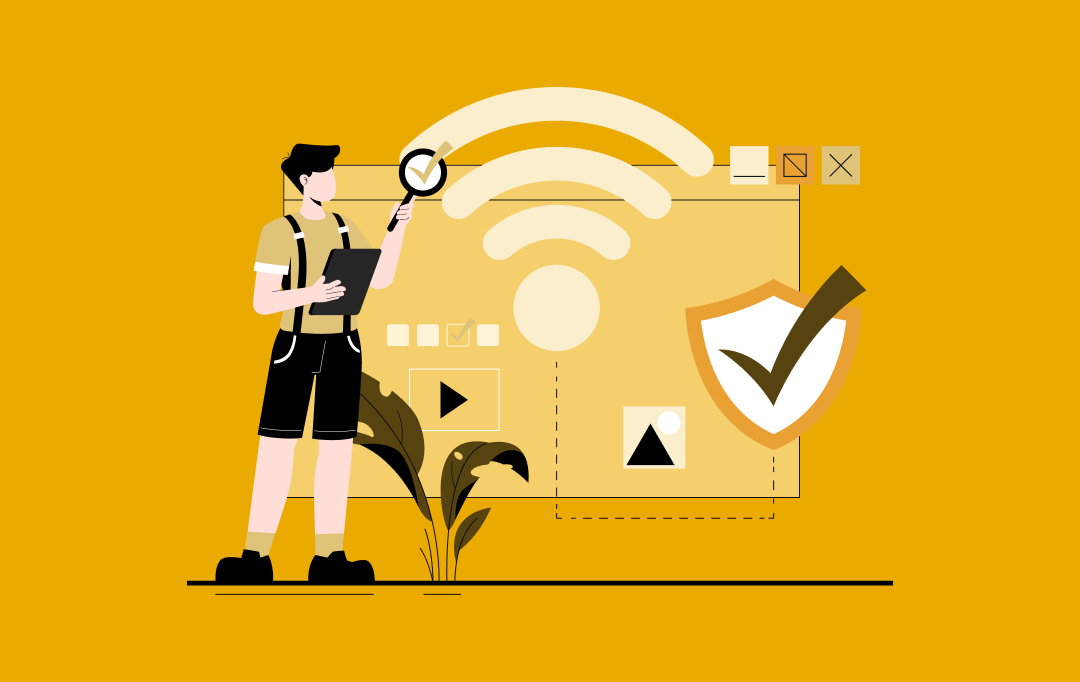
Key takeaways: IoT in insurance moves decisions from static risk estimates to real-time insights drawn from vehicles, homes, and personal devices. Connected sensors help insurers lower fraud, detect issues early, and settle claims faster with clear evidence instead of guesswork. The biggest IoT use cases today include telematics for driving habits, smart home leak and…
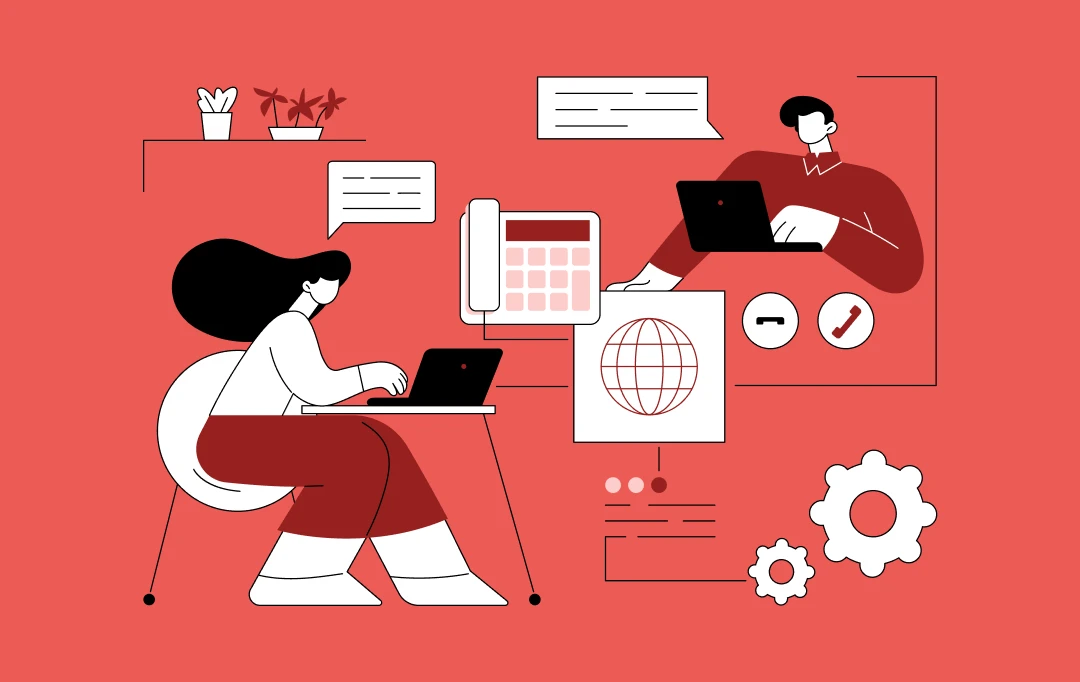
Role of IoT in Revolutionizing Smart Grids Across the Middle East
Key takeaways: IoT is becoming the only practical way for Middle Eastern grids to handle rising demand, renewables, and reliability pressure. Modernization is moving fast because utilities can’t rely on traditional grid models anymore. The region’s harsh environment makes rugged IoT design and multi-layer communication essential, not optional. Compliance frameworks in the UAE and Saudi…

How Edge Computing Enhances IoT App Performance
Key takeaways: Edge computing kills latency by processing data on the spot, paving the way for real-time magic in things like autonomous cars and factory robots. By analyzing data at the source, you can slash your bandwidth and cloud storage bills. It's just a more efficient way to run your IoT ecosystem. Your IoT setup…
